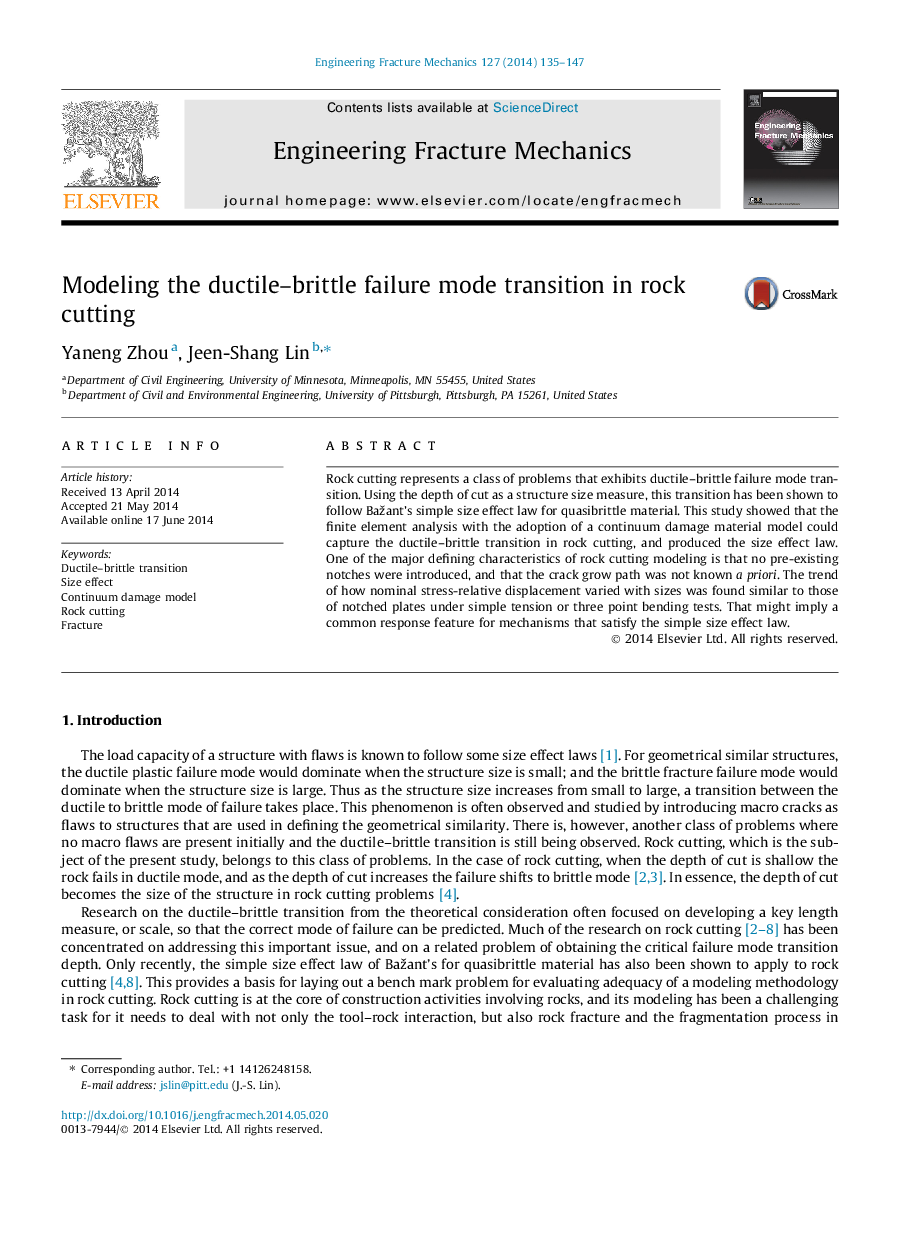| Article ID | Journal | Published Year | Pages | File Type |
|---|---|---|---|---|
| 770683 | Engineering Fracture Mechanics | 2014 | 13 Pages |
•Rock cutting was modeled with no a priori cracks and no preset crack grow path.•A continuum damage model together with element erosion was successfully employed.•The stress–displacement curves were similar for rock cutting and loaded notched plates.•Bažant’s simple size effect law fit all computed results.
Rock cutting represents a class of problems that exhibits ductile–brittle failure mode transition. Using the depth of cut as a structure size measure, this transition has been shown to follow Bažant’s simple size effect law for quasibrittle material. This study showed that the finite element analysis with the adoption of a continuum damage material model could capture the ductile–brittle transition in rock cutting, and produced the size effect law. One of the major defining characteristics of rock cutting modeling is that no pre-existing notches were introduced, and that the crack grow path was not known a priori. The trend of how nominal stress-relative displacement varied with sizes was found similar to those of notched plates under simple tension or three point bending tests. That might imply a common response feature for mechanisms that satisfy the simple size effect law.
